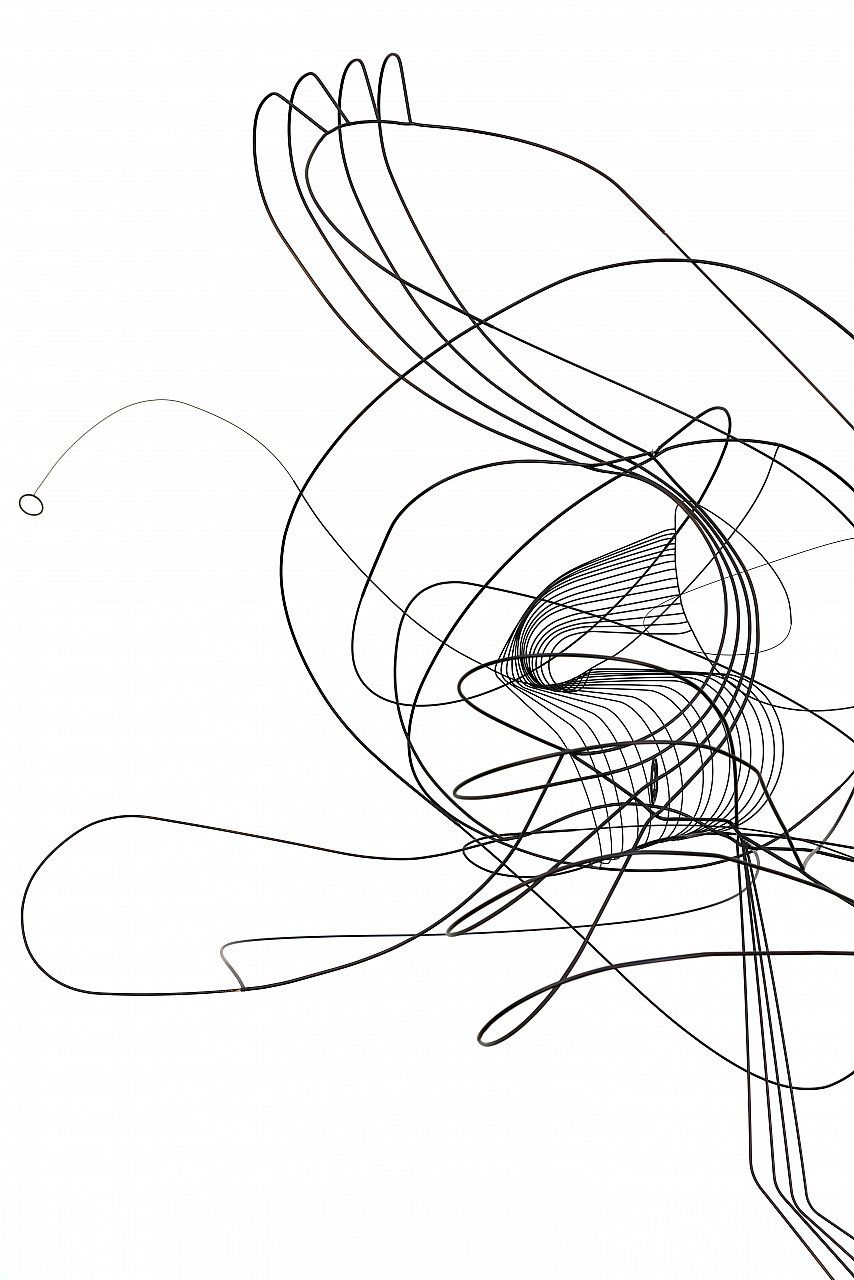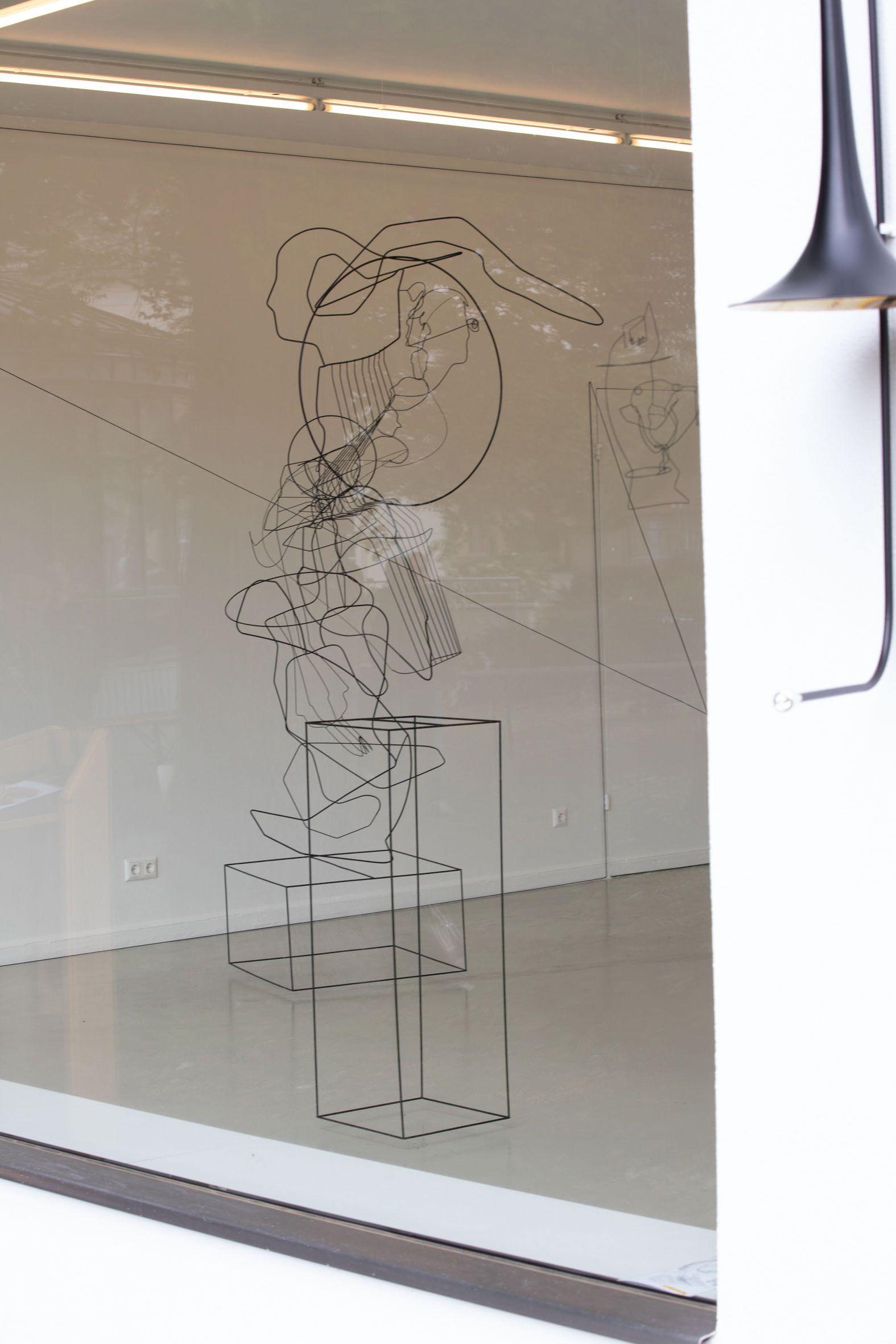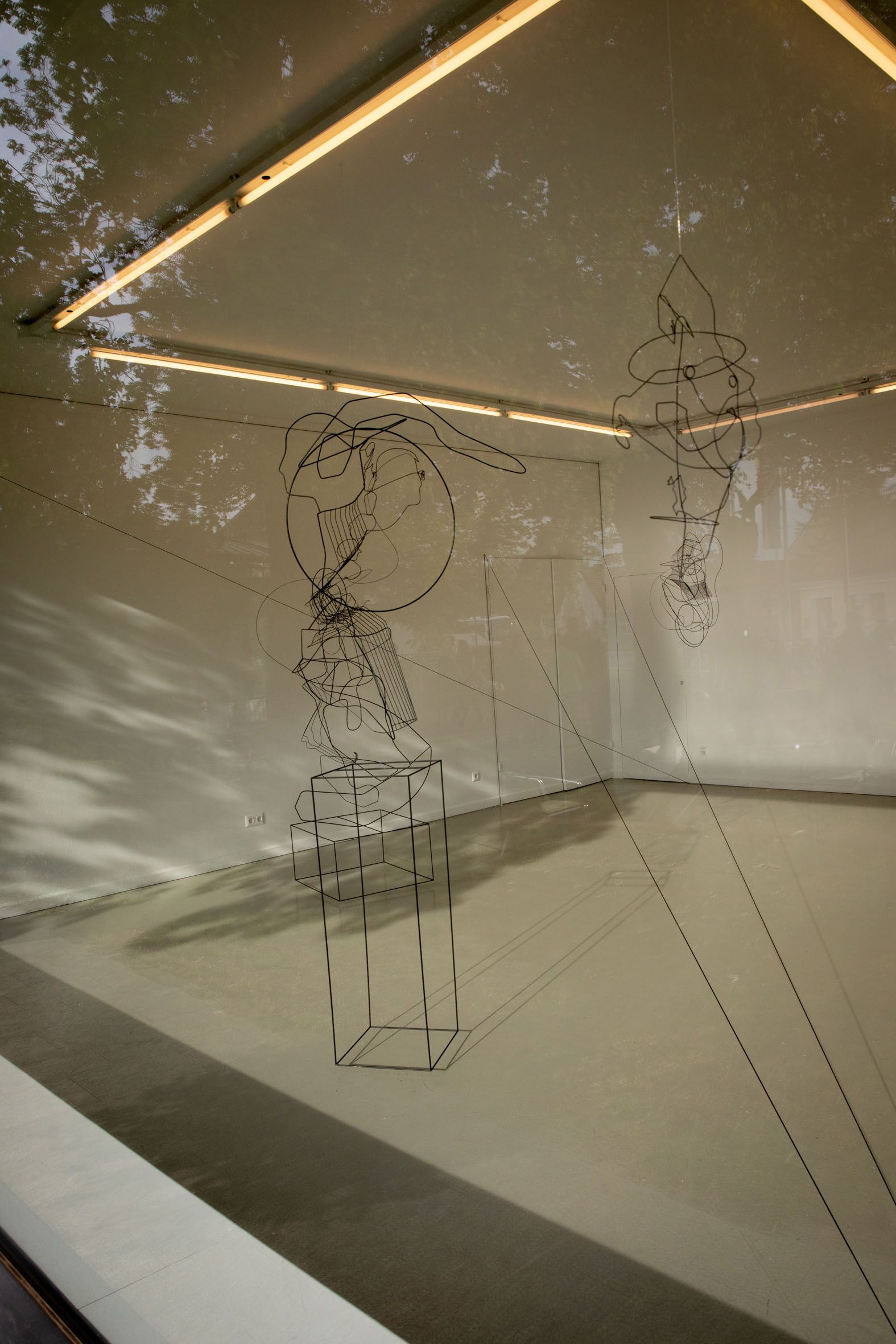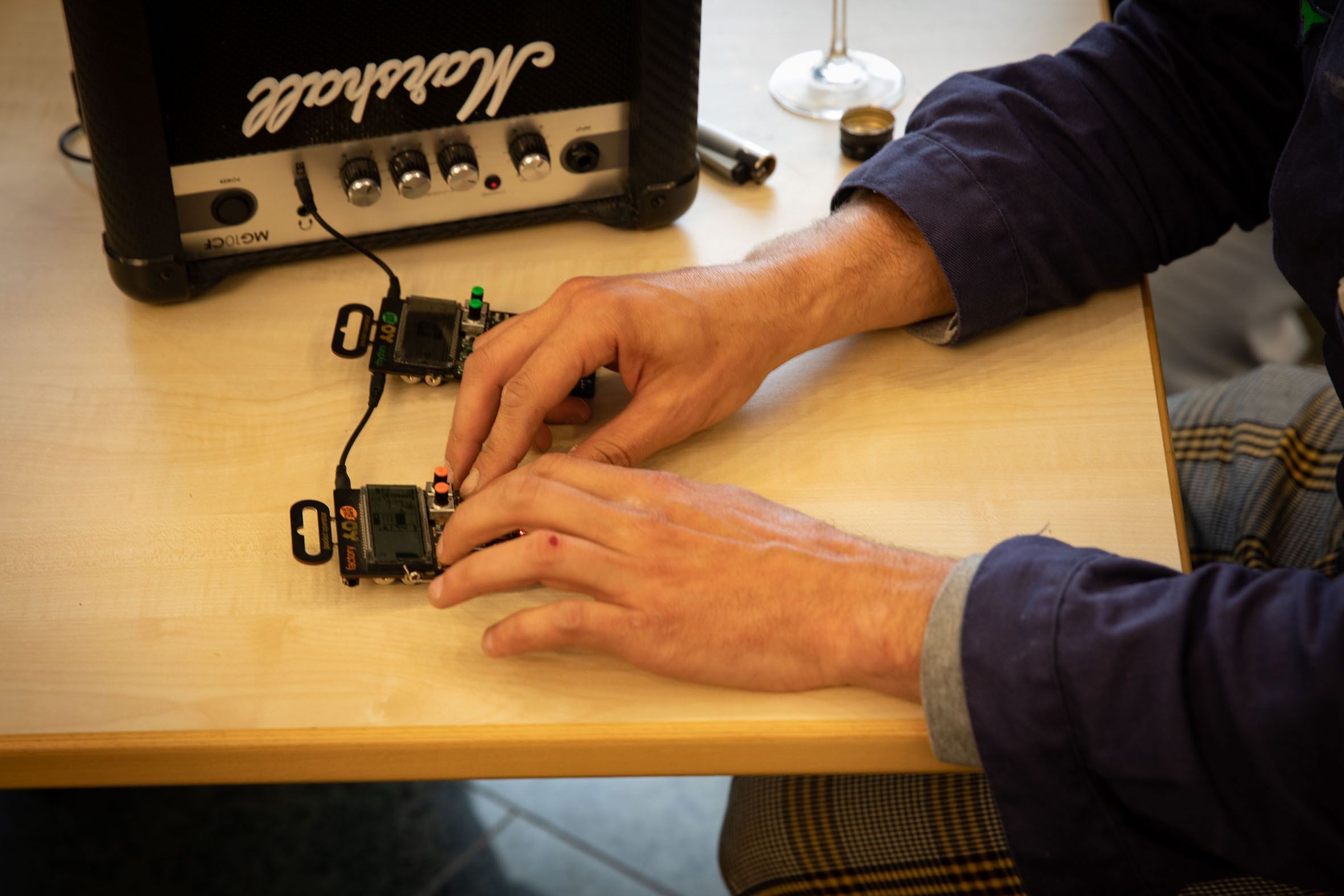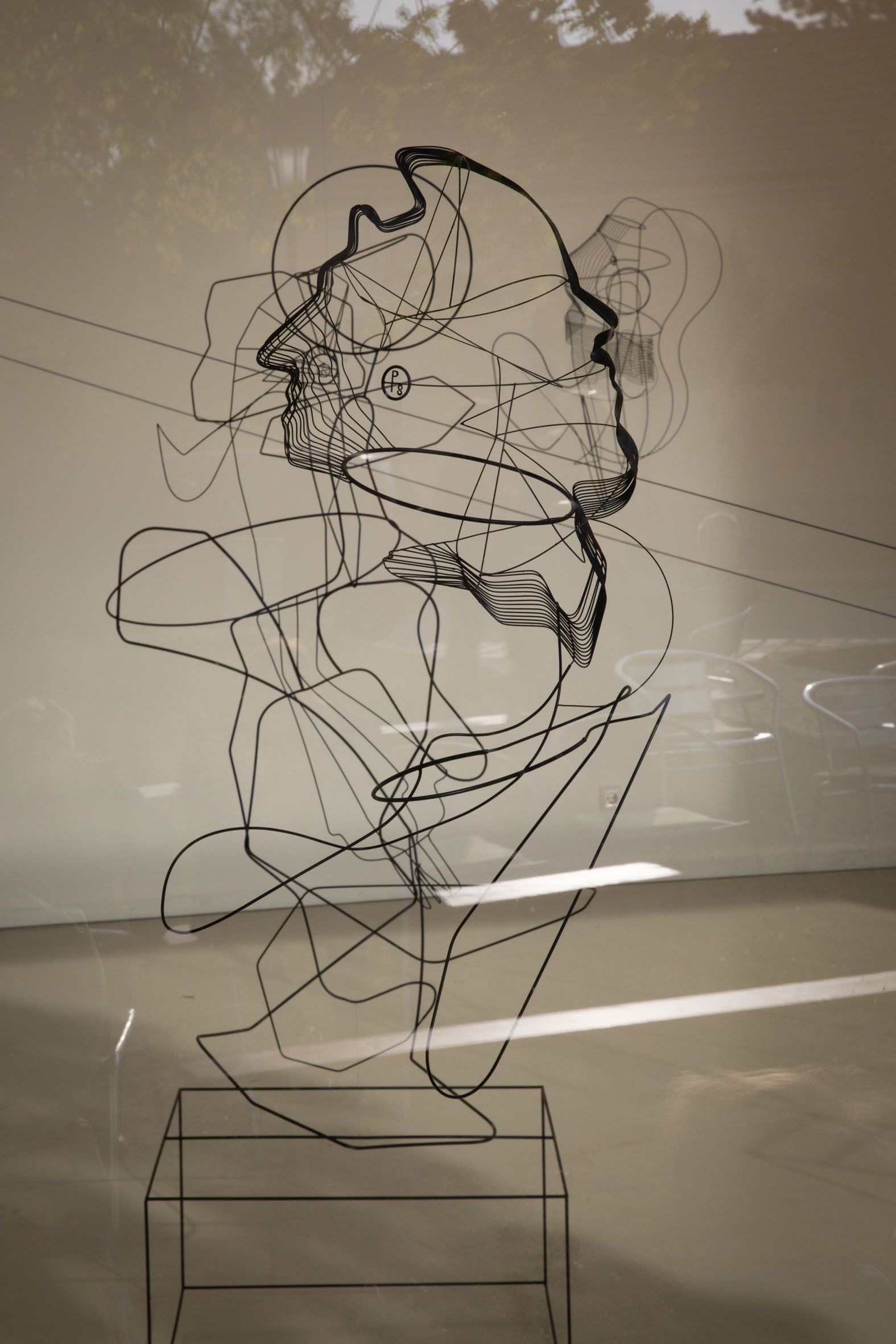Constantin Luser
:
Black Trombone
Back
Information
The starting point for Constantin Luser’s works is the line in general, and the drawn line in particular. Using a fineliner or a ballpoint pen, he creates works on paper that remind us of enlarged details of construction plans, or mind maps expressing the artist’s thoughts about drawing, like a kind of sketchbook. Luser’s drawings can also leap out of the paper and onto the floor or the walls of the exhibition room. Sometimes, he draws double, triple, or even multiple lines, occasionally in different colors, causing the picture to appear blurry, or as if it is vibrating. This effect is particularly enhanced when he combines wall drawings with objects made of brass wire. He began making these objects several years ago as a way to translate delicate drawings into three-dimensional sculptures that hang from the ceiling as suspended filigreed objects. The lines of these objects overlap with the wall drawings while also casting shadows on the wall, thus lending beholders an essential role. As viewers move around or through the installations, the air causes the objects sway and their perspective of the line formations shifts. The drawings, which are accessed and experienced spatially, appear to be constantly changing.
Luser’s show at the Kunstraum Weikendorf allows the audience to become active in a similar way. Although they are prevented from entering the room by a pane of glass, they can still interact with the objects in the room from the outside, when passing by. In the room are six wire sculptures. Three of these are larger and seem to be solidly resting on plinths. However, they and their plinths are actually hovering just above the floor. These sculptures are part of the series Praterserie and have such titles as Dreieinigkeit (Trinity), Erbfolge (Succession), and Der Schöne und das Biest (Male Beauty and the Beast). In addition to the sculptures, Luser has stretched twine across the space to outline a room within the room with a shifted aspect ratio, thus highlighting the stabile structure. The setting is complemented by a black trombone that lends the work its title. Acting as a kind of interface with the outside world, the trombone is actually a bell, tube, and mouthpiece of a bugle attached to the outside of the building. These are meant for people passing by to blow into – in other words, they are encouraged to play the instrument.
In earlier works, Luser also integrated musical instruments into his wire objects, even creating independent sounding boxes or instrumental sculptures. One such work is Rotationsquintett (Rotational Quintet), which he created in 2006 with Lukas Galehr and Matthias Makowsky. This work is a merry-go-round with brass instruments that you can play any way you like. He also created the Riesen-Vibrosaurus (Gigantic Vibrosaurus) in 2008 and Molekularorgel (Molecular Organ) in 2010. The latter is a tube sculpture with fourteen trumpets, fourteen trombones, and seven tubas, all of which can be played.
In Kunstraum Weikendorf, at first it seems as if we are dealing with only one instrument that is also a sculpture. However, the objects in the room’s interior consist of fine metal tubing, some of which is only two millimeters thick. These can also be regarded as sound elements or parts of an instrument only need to be assembled. Furthermore, the stretched twine resembles the strings of a musical instrument, which could be made to vibrate gently by a loud sound from outside, thus transforming the entire structure into one large resonance chamber.
By choosing the title Black Trombone, Luser refers to the chanson of the same name by Serge Gainsbourg written during his jazz phase in the early 1960s. However, the work not only plays with the trombone that is sung about (in the music video for the song, the instrument can only be seen as a shadow – as a kind of wall drawing, if you will – behind the singer); it also refers to the improvisation, variation, spontaneous interaction, and ease in the song. These aspects, which are typical for jazz, are also relevant for Luser’s work. By defining parameters and establishing a framework, Luser leaves it up to us, the audience, to help shape the performative installation by playing in the jam session for the duration of the exhibition.
